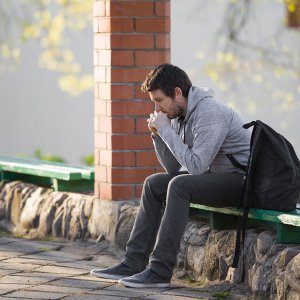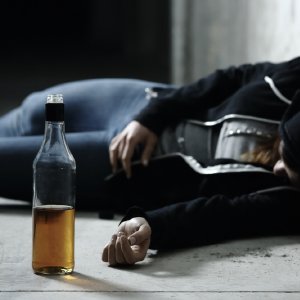“Study Drugs” and Alcohol Commonly Abuse on US Campuses

Each fall, more than three million students start their studies in higher education institutions which range from community colleges to Ivy League Universities. They join another 20 million students already working toward graduate or post-graduate degrees.
In most states, however, residents only make up 20% of the student body. This means that 80% of students in these states have left their homes to go away to school. For many of them, it is their first experience of an extended time away from home.
Unfortunately, news reports of mishaps on the college campus, many related to alcohol or drug use, reveal that too many of these students were not sufficiently prepared to succeed once they arrived.
Many students enter environments where heavy drinking, drunkenness, marijuana and prescription stimulant use are just part of the usual landscape. How hard it must be to keep one’s eye on the goal of a useful college education if the environment around them is drinking and drugging. Some manage it. Others metaphorically crash their educations on the rocks through arrests, expulsions, injuries, criminal activities, addiction, and death through overdose or accident.
It’s too easy to find the proof.
The Annual Monitoring the Future Survey
Let’s first look at a basic survey of college students between the ages of 19 and 22 that is published every year, Monitoring the Future, published by the University of Michigan Institute for Social Research.
- How many of the students involved in the survey used any illicit drug in the past year? 47%
- How many used an illicit drug other than marijuana? 17%
- How many used marijuana in the last year? 43%
- In the last month? 26%
- Near-daily? 6%
- How many vaped marijuana in the last month? 14%
Drinking
- How many engaged in high-intensity drinking (10+ drinks in a row) in the last two weeks? 10%
- How many engaged in binge drinking? 33%
- How many have been drunk in the past year? 59%
- The survey report also notes that this high-intensity drinking pattern typically developed after high school graduation.
Other than marijuana, what are the most commonly used illicit drugs?
- Adderall 8.4%
- Cocaine 5.6%
- LSD 3.7%
- MDMA 3.3%
- Tranquilizers 3%
- Ritalin 2.5%
- OxyContin 2.5%
- Sedatives 2%
Those are the bare facts. Let’s look at the phenomenon of campus drug and alcohol use and its consequences.
So-Called “Study Drugs”
Adderall, Ritalin, Concerta, Vyvanse and other brand names identify stimulants that are prescribed when a doctor, psychologist or psychiatrist diagnoses a person with an attention deficit disorder. These drugs are often misused either by those who obtain the drugs illicitly or those who fake symptoms and go to doctors exclusively to get a prescription they can misuse.

The belief among many college students is that these drugs help them succeed in their studies. Essentially, however, these are simply stimulants that create an unnatural, drug-induced ability to stay awake and alert longer than usual. Just like the street drug methamphetamine, this artificial inducement stresses the body and the mind. Adverse effects include irrational anger, a dangerously high body temperature, irregular heartbeat and seizures.
According to another student survey published in 2019, 18% of the students surveyed said that yes, they have used one of these prescription stimulants for non-medical reasons. However, this number varies, sometimes wildly, depending on where the survey was done. Just take a look at these numbers resulting from other campus surveys, compiled in a 2015 report on this problem.
- Large Southern university: 43% misused one of these drugs in their lifetimes
- Mid-Atlantic university: 11% in the past year
- Mid-Atlantic university: 38% by their fourth years at university
- Southeastern university: 34% in their lifetimes
With surveys about drug use, it’s always going to be challenging to get completely accurate information, as these numbers seem to indicate. Both the level of drug use and honesty about drug consumption may vary considerably.
These stimulants can be addictive, just like street stimulants, and misuse of them can lead to the use of other harmful substances, as you can see in this news report from Utah.
What students don’t realize is that comparative studies of those who misuse a drug like Adderall and those that reveal no difference in grades or other advantages.
Alcohol On Campus
Alcohol consumption just seems to go hand in hand with being at college, especially for those in Greek organizations (fraternities and sororities).
Multiple studies have found that members of fraternities and sororities are more likely to drink to risky levels and use other substances than other students. Men are more subject to this kind of behavior and therefore suffer more unpleasant or even dangerous consequences.
One study found that far more members of Greek societies engaged in binge drinking more often and consumed more drinks per week than other students. They also suffered more hangovers, blackouts, unwanted sexual encounters and problems in their studies.

More Problems After College
These patterns can have long-lasting consequences. A 2018 study looked into how many members of Greek organizations binge drink and how many eventually have symptoms of alcohol use disorder (AUD). This study analyzed information from individuals who had responded to the Monitoring the Future survey when they were high school seniors and continued to provide information through age 35.
Males who had been in a fraternity for at least one semester had significantly higher rates of binge drinking while they were in college and even afterward, compared to others who weren’t in fraternities. Forty-five percent of this group showed symptoms of AUD compared to only 33% of students who were not in fraternities.
Women in sororities had a slightly higher likelihood of showing AUD symptoms at 35.
Lives Lost Due to Alcohol
Stories of young people losing everything because of overuse of alcohol are tragically easy to find. Unfortunately, these losses are very often associated with Greek life on campuses. Here’s just a few young men who were lost to their families forever.
- Dalton Debrick, a freshman rushing a fraternity, died of alcohol poisoning at an off-campus party.
- Timothy Piazza, 19, died from alcohol poisoning during a hazing and initiation ritual as he pledged a fraternity at Penn State.
- Maxwell Gruver, 18, died with a blood alcohol concentration of nearly half a percent, 25 times the legal limit for driving. He was a freshman going through an initiation.
- Andrew Coffee, 20, died from alcohol poisoning while pledging a fraternity at Florida State University.
- Philip Dhanen, 18, a fraternity pledge at Fresno State, drank 37 shots of hard liquor at a party and then died.
The National Institute on Alcohol Abuse and Alcoholism estimates that alcohol consumption contributes to as many as 1,500 student deaths annually. There are also nearly 700,000 alcohol-related assaults and nearly 100,000 sexual assaults.
It would be a horrific loss to send a beloved child off to college, only to have them die so unnecessarily in an alcohol-related incident.
Vital Preparations for College
The dean of students at Bloomington University in Indiana stated the problem very well: “For students who have lived in very structured situations and environments, going to a college campus when very suddenly they have this new kind of freedom and new choices to make, it can be pretty overwhelming…Parents and students are so focused on getting into college, there’s not always a lot of attention given to what’s going to happen once they’re actually there.”
“Parents and students are so focused on getting into college, there’s not always a lot of attention given to what’s going to happen once they’re actually there.”
It’s up to parents to prepare a child for an environment that may be permissive about drug and alcohol use. This makes for some sobering conversations between parents and children.
It’s vital to be very specific about the subtle or not-so-subtle peer pressure the new student may feel if they go to a party where everyone is drinking—except them. They have to be prepared to make hard choices.
Parents must be frank about the types of harm that result from drinking too much. These new students must know with certainty that they can and will die from drinking too much too fast and just how much alcohol it takes to kill a person.
The new student should be informed what to do if a person passes out drunk to protect his (or her life) so the student is not faced with being charged with another student’s death.
They should also be educated on the risks of addiction, paranoia, heart failure, seizures and psychosis among those who misuse prescription stimulants by taking high doses.
It would be wise for parents to get very well informed on these topics and have direct educational conversations with college-bound children. It could save their life.
Parents and the Educational Institution
Parents can also apply pressure to their child’s university to make certain policy changes. At the University of Colorado, the policy was implemented to notify parents if underage students violated campus alcohol policies. The school also banned beer sales during football games. After that change, there were 52% fewer students ejected from the stadium for bad behavior and a 70% decline in arrests. There was even a significant drop in assaults.
Similar improvements occurred at the University of Delaware, Florida State University, Georgia Institute of Technology and several other schools.
Parents who survived rocky university years of their own might feel that the challenges that their child will encounter are just normal. The problem is those 1,500 young adults who never make it home. With parents being open and honest about the very real risks to educational success, health and even life, young adults have a much better chance of navigating the university environment safely.
Sources:
- https://educationdata.org/college-enrollment-statistics
- http://www.monitoringthefuture.org/pubs/monographs/mtf-vol2_2019.pdf
- https://www.cleveland.com/metro/2015/10/college_students_say_it_is_eas.html
- http://www.kathrynhumphreys.com/uploads/4/3/0/6/43065295/benson_flory_humphreys__lee_2015.pdf
- https://kslnewsradio.com/1917490/from-adderall-to-huffing-canned-air-a-utah-mans-journey-with-addiction/
- https://thecollegepost.com/amp/adderall-abuse-consequences/
- https://www.fresnobee.com/news/local/article193021704.html
- https://www.cnn.com/2017/12/15/us/fraternity-pledge-deaths-2017/
- https://www.drugabuse.gov/news-events/news-releases/2018/02/greek-life-membership-associated-with-binge-drinking-and-marijuana-use-in-later-life
- https://www.cnn.com/2017/12/20/us/fsu-fraternity-pledge-death-grand-jury/index.html
- https://www.fresnobee.com/news/local/article193021704.html
- https://www.insidehighered.com/news/2014/09/19/freshman-deaths-show-risks-transitioning-college-life
- http://www.alcoholpolicymd.com/programs/AMOD_Background_info.htm
- https://www.drugabuse.gov/publications/drugfacts/prescription-stimulants
Reviewed by Claire Pinelli ICAADC, CCS, LADC, RAS, MCAP


 ®
®